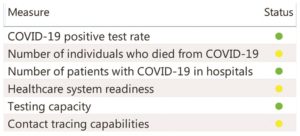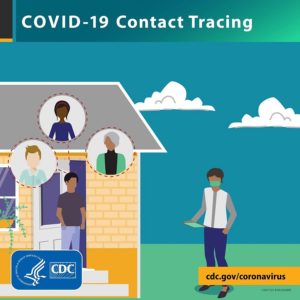PROVINCETOWN — The Outer Cape’s economy is opening back up. The streets are showing signs of life, as lodging, outdoor dining, and retail resume after a three-month hiatus. Workers and tourists are returning to the Cape, and as people flow in, even with all the safety protocols, Covid-19 will likely be reappearing as well.
This time, it’s supposed to be different, however. Increased testing and a strong contact tracing program are two of the prerequisites of the state’s highly structured reopening. If cases can be identified and isolated, then we can slow the spread of infection even as the economy resumes.
But contact tracing can also be disruptive. When everyone was under a stay-at-home order, a week of self-isolation wasn’t that different from any other week. But in a world where many more people will be working, self-isolation presents employees, business owners, and housemates with some thorny situations.
What Will They Tell You?
Provincetown’s health dept. runs its own tracing program, said Steve Katsurinis, chair of the board of health. In Truro, Wellfleet, and Eastham, contact tracing is managed by the Visiting Nurses Association (VNA) of Cape Cod, a longstanding nonprofit connected to Cape Cod Healthcare. Sarah Endres, the director of public health at VNA, explained how a contact tracing call works.
“We don’t use individual names of patients,” said Endres. “But we do name the location, and we get pretty specific about when the exposure was. Honestly, I don’t think there’s been one call so far where people can’t put the pieces together.”
The contact tracer has to be specific, because the nature and duration of exposure are crucial. How many minutes, at what distance, with what personal protection, and with what cleanliness protocols — all are key. The contact tracer will need to make a decision at the end of the call: whether the exposure was so insubstantial that a test is not required, or, if the exposure was significant, to order you to get a test and self-isolate until the results come.
The contact tracer will also want to know about your other close contacts. Depending on the details, people in your household or with whom you are especially close could be directed to get a test and self-isolate as well.

“We don’t typically isolate contacts of contacts right away,” said Endres. “We would all go crazy, isolating the universe. But as a matter of authority, we can.”
People who share a bedroom are thought to be very likely to get the coronavirus if their partner has it, Endres explained. Meanwhile, “transmission has been sometimes but not always for people who share a kitchen or a bathroom.” Two people in a household might be ordered to test and self-isolate, said Endres, while others might be ordered to stay away from their housemates.
Trying to Keep the Lights On
Testing is faster now than before, and more readily available. Katsurinis said test results have been coming back in two to three weekdays, and Endres said Cape Cod Healthcare has a rapid test that is ready in 24 to 48 hours.
Rapid results are helpful, because isolation orders could wreak havoc on a small business. One problematic exposure could put all the cooks in a restaurant, or all the housekeepers in a hotel, in isolation for three days. This could be even harder to deal with than formal post-exposure procedures. (According to phase two rules, retail stores and restaurants must shut down the whole property for a deep clean after a customer or employee tests positive. Lodgings must shut down the room in question for a deep clean.)
 Following all the guidelines closely could help a business avoid having its staff quarantined, Endres pointed out. If all the rules are followed, an employee would never be in sufficiently close contact with a customer to be contact-traced.
Following all the guidelines closely could help a business avoid having its staff quarantined, Endres pointed out. If all the rules are followed, an employee would never be in sufficiently close contact with a customer to be contact-traced.
“The exact verbiage is: six feet or less from a confirmed coronavirus case for a prolonged period of time,” she said. “If all of these rules about masks and distance and handwashing and surfaces are being followed, there’s a very good chance we would say that’s not a prolonged period of time.”
Transmission between customers and employees is supposed to be negligible — but where many employees live together, real trouble could lurk. An exposure that has nothing to do with the workplace could still make several employees who share housing sick at the same time. And unlike a mere contact trace, an actual diagnosed illness comes with a 14-day self-isolation order, possibly for the whole household.
“Our health department knows how interconnected things are here,” said Katsurinis. “People are coworkers and friends and housemates. It could ripple through that matrix. The likelihood that it impacts business in a big way and somewhat randomly is going to be difficult to navigate.”
“When you think of an apartment of six people who are all desperate to make some money this summer,” said Endres, “if one gets coronavirus, it’s a little bit of a nightmare. People have to be mindful and take masking and distancing seriously, so everyone can stay healthy and stay working.”



